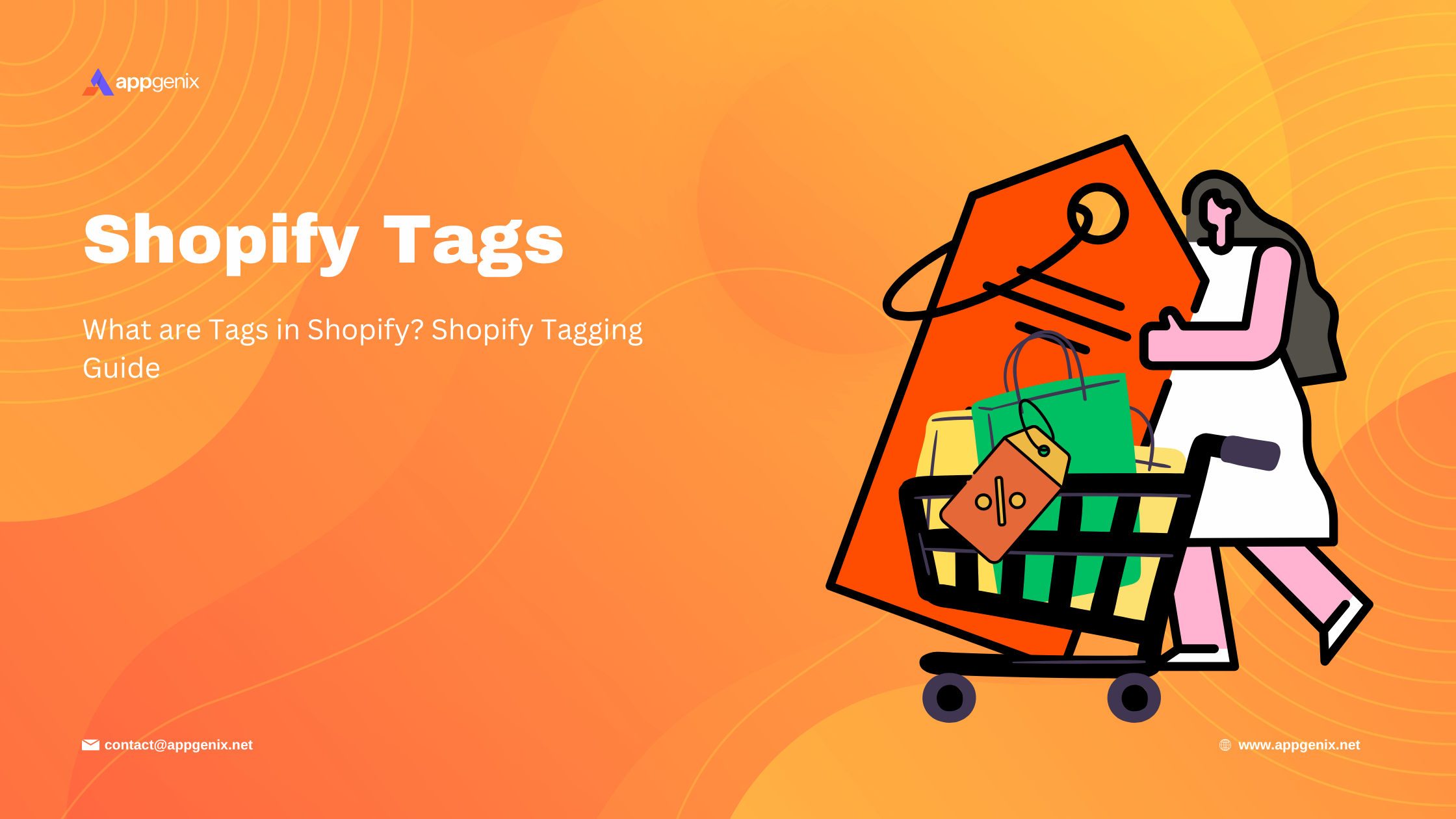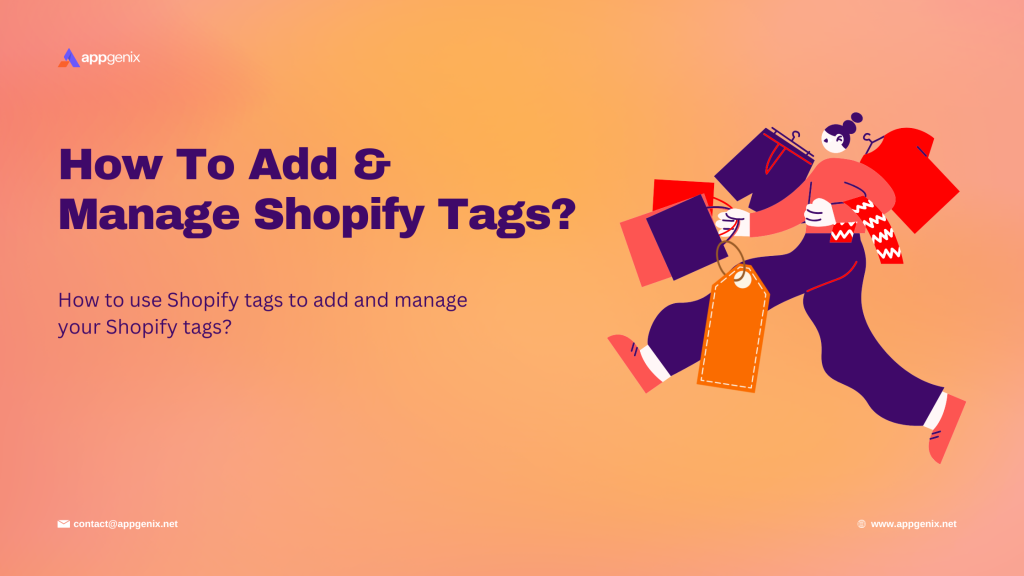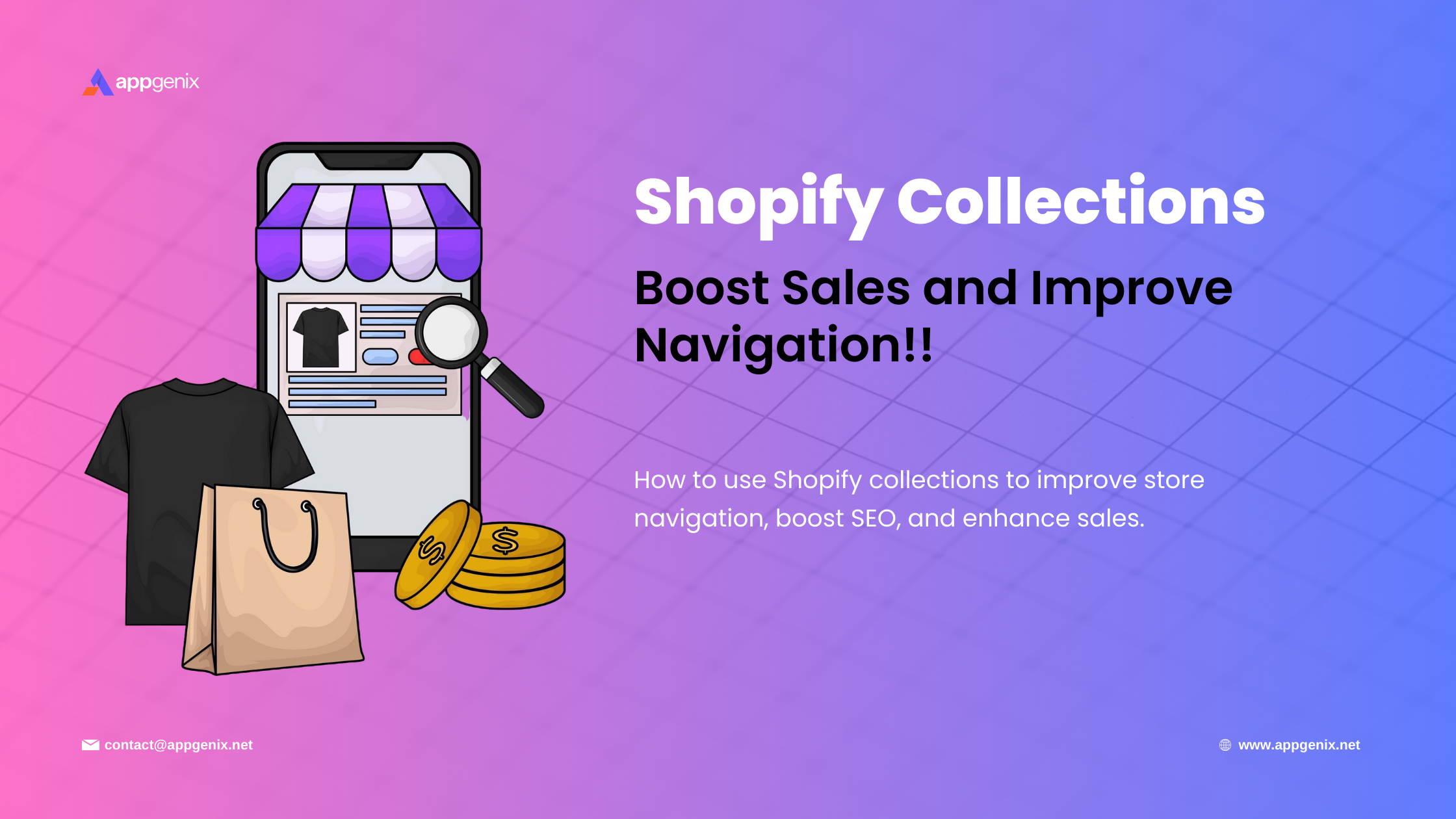
95% of the customers say their favorite online stores are easy to search and navigate products. If you also want your Shopify store to be a favorite to the customer, use tags effectively.
Categorizing your store's products using Shopify tags helps visitors search for products quickly. Besides, using the tags for product descriptions and meta descriptions also helps with search engine optimization. Besides these, you can use these tags for customers, blog posts, orders, etc. Thus, it makes store management and fulfillment services more convenient.
Want to learn more about Shopify tags? Continue reading and know why you should use tags for your Shopify store-
What Are Shopify Tags?
Shopify tags are labels that categorize your store's products, customers, orders, or blog posts. These tags are used from the merchant end to make store management easier. Tags are mainly descriptive keywords that you can use from the backend for convenience when searching for a product. Using tags lets the merchant and customer navigate the website and get better results. It also helps in search engine optimization. If you run marketing campaigns or promotions, tagging will play an effective role. You will also get benefits for inventory management by using tags on your product. For example, if you are selling beauty products, a tag like; 'Lip care' will group all your lip-related products in your store. This will also help the customer to find their desired item quickly.
Benefits of Using Tags in Shopify
Improved Search Functionality: Using tags, you can boost the user experience of the customers many times. You can create filter options to make shopping more efficient. This makes it easy for the customer to search for any product based on preferences. Besides, as a Shopify merchant, you will also get benefits when searching for items.
Marketing Efficiency: The Shopify tags groups products into a specific category. You can then use these groups for marketing purposes. This will help you with cross-selling and up-selling campaigns. Besides, strategically using tags in product descriptions and meta tags will also help in search engine optimization.
Inventory Management: Including tags like materials, season, etc., you can quickly track the stock levels. Thus, you can restock your product at the right times. This will further help you monitor sales performance.

Types of Shopify Tags
There are different types of tags to use on your Shopify store. These include the following:
Product Tags
Product tag is the most widely used Shopify tag. You can group your products into different groups, such as:
- The product ranges from $300 or above.
- Seasonal categorization, for instance- winter or summer item.
- Age grouping or gender categorization.
- Material of composition, etc.
You can use tags of your convenience based on the type of product you sell. This will help you and your customer to get better browsing results.
Transfer Tags
The transfer tags are used when you move the inventory location within the Shopify store. You can filter the tagged transfers on the transfer page. Thus, you will get a more streamlined view of your Shopify store. For example- a tag for a specific product category will help you find relative transfers easily.
Customer Tags
Customer tags work great to manage your customer data or information. For instance, you can segment your customers based on location, number of orders, return parcels, etc. This will help you to target potential buyers and market your store accordingly.
Blog Post Tags
Blog posts are a great way to make your Shopify store engaging. By uploading blogs or articles, you can provide tutorials or details about the product you sell. Blog post tags are what you need to organize these articles. You can categorize the blogs too - ‘news,’ ‘tutorials,’ ‘announcement,’ etc. Thus, it will help the viewers and the store owner to find specific articles of any category.
Order Tags
It is crucial to track your orders to ensure successful fulfillment. You can do it by using tags on orders based on the date of order received, delivery date, fulfillment religion, status of fulfillment, etc. Doing this will help the fulfillment service or the logistics with their shipments.
Draft Order Tags
If you have pre-orders or any campaign-specific orders, you can use draft order tags for them. This will help you separate these orders from the regular ones. When needed, you can make changes to the draft orders.
Popular Usage of Shopify Tags
Though tags primarily categorize products for organizing your store, you can also use them for filtering and creating collections. Here is detail about this-
Use tags for search
Searching is the most common and major application of tags. You can search products, blog posts, orders, draft orders, etc., by tag names. All you need to do is type the category name in the search bar of your Shopify admin, and it will show you the result. For instance, if you have used a tag to categorize your summer collection, type "summer,’' and all the products under this tag will show up.
Use tags to filter
You can use tags to filter both internally and externally. To filter a tag, go to your Shopify admin and click on the category of tag, for example- Product, Customers, Blog posts, etc. Now, click Tagged with or More Filters and enter the name of the tag. For example- you can filter all the orders with the tag ‘fulfilled.’ There is also an option to filter multiple tags by using syntax in the search list.
Create an automated collection
The most amazing feature of the Shopify tag is that you can create an automatic collection of your products. That is, when you use a tag for a product, it appears as a result of similar customer searches. For example, you have used a 'winter' tag on a jacket. So, other winter collections like socks or sweaters will also appear as suggestions when someone is looking for a jacket. To automate the collection, here are the steps to follow-
- Manually add tags to your collection's product.
- Next, Go to Products > Collections in the Shopify admin and choose 'Add a collection' to start a new automated collection.
- Use the condition that you added in the previous step using the tag.
- Delete the manual collection.
How To Add & Manage Shopify Tags?

You must know how to use Shopify tags to add and manage your Shopify tags. Below, we are adding all the procedures to use Shopify tags-
Creating Tags
Step 1: Go to the Shopify admin panel.
Step 2: Select the type of tag you want to create; for example- customer, blog post, products, etc. We choose Product tags to show you details.
Step 3: Select the product you want to add to the existing product list.
Step 4: In the Tags area, type the name of the tag you wish to add or select an already-existing tag from the Tags list under View all tags. Tags should be separated with commas. Your name tag will be immediately saved if it is a new one.
Step 5: To save your changes, click Done.
Removing Tags
Here is how to remove tags manually from your Shopify store:
Step 1: Go to Shopify admin and select the relevant section similar to the above procedure.
Step 2: There is an "x" sign next to the tag. Click on the sign, and the tag will be removed. You can also make a list from the Manage in the Tabs section by unchecking the tags you want to remove.
Step 3: Click save.
Bulk Tagging
Bulk tagging can save you time and effort. Here is how to use bulk tagging: This allows you to select multiple items directly from the Shopify admin at the same time. Here is how to use bulk tagging:
Step 1: Go to Shopify Admin and click ''Add tags'' or Remove tags''.
Step 2: Select all the items that you want to tag.
Step 3: Click Save.
Automate Tags
You don't have to manually tag your products in Shopify. Alternatively, you can use programs that can complete the task automatically! We refer to these apps as "smart tag apps." They let you set up workflows like mini-programs that follow your instructions.
Thus, you can create workflows that precisely match your requirements by selecting from hundreds of product details to use based on the tags. Here are the most popular Shopify apps for automating tags-
- Auto Tags ‑ Smart Collection
- Omega ‑ Auto Tag & Flow
- SC Order Tags & Flows
- AOD Auto Tags Customer & Order
The Effect of Shopify Tags on SEO
Though tags do not directly deal with search engine optimization, they can directly impact the SEO of your Shopify store. Here, we are addressing both positive and negative impacts on SEO for using tags-
- Positive Impact
Creating a collection using tags can work great for your page. Well-organized collections with clear names and tags help search engines understand your products better. Besides, the tags used in product and meta descriptions are also helpful. This can improve your ranking in search results for relevant terms.
- Negative Impact
Some Shopify themes show your product tags on the product page. Since search engines like Google read the text, cramming too many keywords into your tags can backfire. Google might think you're trying to trick them and lower your ranking. Again, when you repeat categories and brands in your product tags, search engines like Google take them as duplicate content. This is because each of these tagged products has its individual URLs, and presenting them on separate pages will make search engines think of two identical content competing for attention. Google might not like that and lower your ranking in search results.
Best Practices For Using Shopify Tags Effectively
Here we are including some tips using which you can effectively use the tags and benefits:
Avoid Overloading with Keywords
Would you like it if the result for the red shirt shows red socks, toys, and everything else in red? Of course not; this leads to a bad user experience. So, to avoid such circumstances, it is crucial to use only relevant words for tags rather than overloading them with too many keywords. Though keyword use in tags helps in SEO, excess use can backfire. Besides, Shopify has a display tag limitation; it will filter only 1000 more relevant tags. And if you overload tags with keywords, important ones can get canceled.
Group Your Stuff Multiple Ways
Proper navigation is essential for large Shopify stores with hundreds and thousands of products. To enhance the user experience, categorize the items into multiple groups. You can use different tag combinations to create collections. So, as the customer searches for a product, all relevant category items will appear.
Use Shopify Tags for Boosting Sales and Promotions
Tags can also be used to promote your products. For instance, if you are having a summer sale, tag products with "summer_sale" or "summer_savings" to make them pop up in search results and product listings. Similarly, you can also use tags like- "flash_sale" or "clearance_deals" to grab attention. You can also use tags for seasonal collections by using tags like "Holiday Picks." Thus, the customer gets themed items that perfectly meet their requirements. Use this strategy if you also want to use the holiday season to make the most of the profit.
Recycling Tags
There is nothing wrong with reusing the old tags. You can revisit past promotions or collections and reapply those tags to new products that fit the category. For instance, if you had a successful "summer_sale" tag last year, reuse it for relevant products in this year's summer sale. This will maintain consistency in your tagging strategy. However, you should also regularly remove the unused tags.
Use Shipping Details Creatively
Using shipping details in the tags is a creative way to use the tags. For example, if you offer free shipping facilities, you can use the tag "free_shipping" for all qualifying products. This will also act as a promotional strategy.
Automate Your Tags Using Apps
Manual tagging becomes difficult when you have a large store with too much inventory. In this case, it's better to automate the tags using apps. You will get a lot of options in the Shopify Apps Store.
Monitor Analytics
Using tags will not work unless you get any results. Yes, it organizes your store, but there is much more to consider. Track the user experience and relevant search results after using tags. See if there is improvement. Thus, you should keep an eye on- customer engagement, search performance, and sales metrics to optimize your strategy.

Troubleshooting Common Shopify Tagging Issues
While working with the Shopify tags, you may need some help with some issues. We are highlighting the most common ones along with solutions to solve them:
Tags Not Updating: Clearing the Digital Path
When editing the existing tags, you may face trouble with update issues. Even after updates, it might show you the same old results. This happens due to junk files or your browser's cache.
Solution: Clean your browser history and check if the tag updates. You can try re-updating the tags. If this doesn’t work, approach Shopify support for help.
Vanishing Tags: Seeking the Lost Trail
Sometimes, you may not find tags after creating or editing them. This occurs when you forget to click the save button, or the browser doesn't refer to it. Here is what you need to do to get rid of this issue-
Solution: Click the 'Save' button after creating or editing any tag to complete the process. However, if the tags vanish, log out of your Shopify store and log back in. This will refresh the browser and show the latest results.
Tag Limitation Puzzles: Navigating the Tag Threshold
Shopify has a tag limit of 250 tags per product, customer, blog post, or transfer. As per the filter, it displays only the first 1000 unique tags and searches. So, even if you use less than 1000 tags in total, the rarely used one might not be visible.
Solution:
- Use tags only for important categories and filters.
- If you have many similar tags, combine them into one broader term.
- Remove the rarely used tags to create space for more relevant ones.
- Use descriptive but concise tags for better organization.
Duplicate Content Issues: Index Page Using “Canonical tag”
Search engines like Google read the text to index your page. It might be considered duplication when you overuse the brand or category name in the product tags. All these products have their URLs, so repeated use of the brand name confuses the search engine.
Solution: Use the "canonical tag" to index your page and track the main page. Thus, the search engines focus on the right page and let customers find similar products on your tag page.
The Bottom Line
Shopify tags not only organize the store but also enhance user experience. You can use these tags to make a collection for your store and offer a more sorted result to the visitor. Though using tags can help SEO, it can also backfire. Don't use too many keywords in the tags to avoid such a situation. Besides, using the "canonical tag" to separate the main page from the individual product page can cause duplication issues. You should also monitor the Shopify tags' limitations and follow the best practices to get an effective result.
Frequently Asked Questions
What are the benefits of using tags?
How many tags do I need for my Shopify store?
What are product tag examples?
Are there restrictions on tag length in Shopify?
Can I use emojis in Shopify tags?
Do Shopify tags affect my store's loading speed?
Is there a way to automate the tagging process on Shopify to save time?
Related Tags:
Popular Posts
Best Free Shopify Analytics Apps
schedule30 Nov 2023
Top Free Shopify Email Marketing Apps to Grow Your Business
schedule01 Jan 2024
20 Best Shopify Apps to Enhance Your Store
schedule26 Mar 2024
Shopify Collections- Boost Sales and Improve Navigation
schedule22 Aug 2024
What are Tags in Shopify? Shopify Tagging Guide
schedule22 Aug 2024
Guide to Setting Up a Loyalty Program for Shopify Plus
schedule28 Mar 2024




